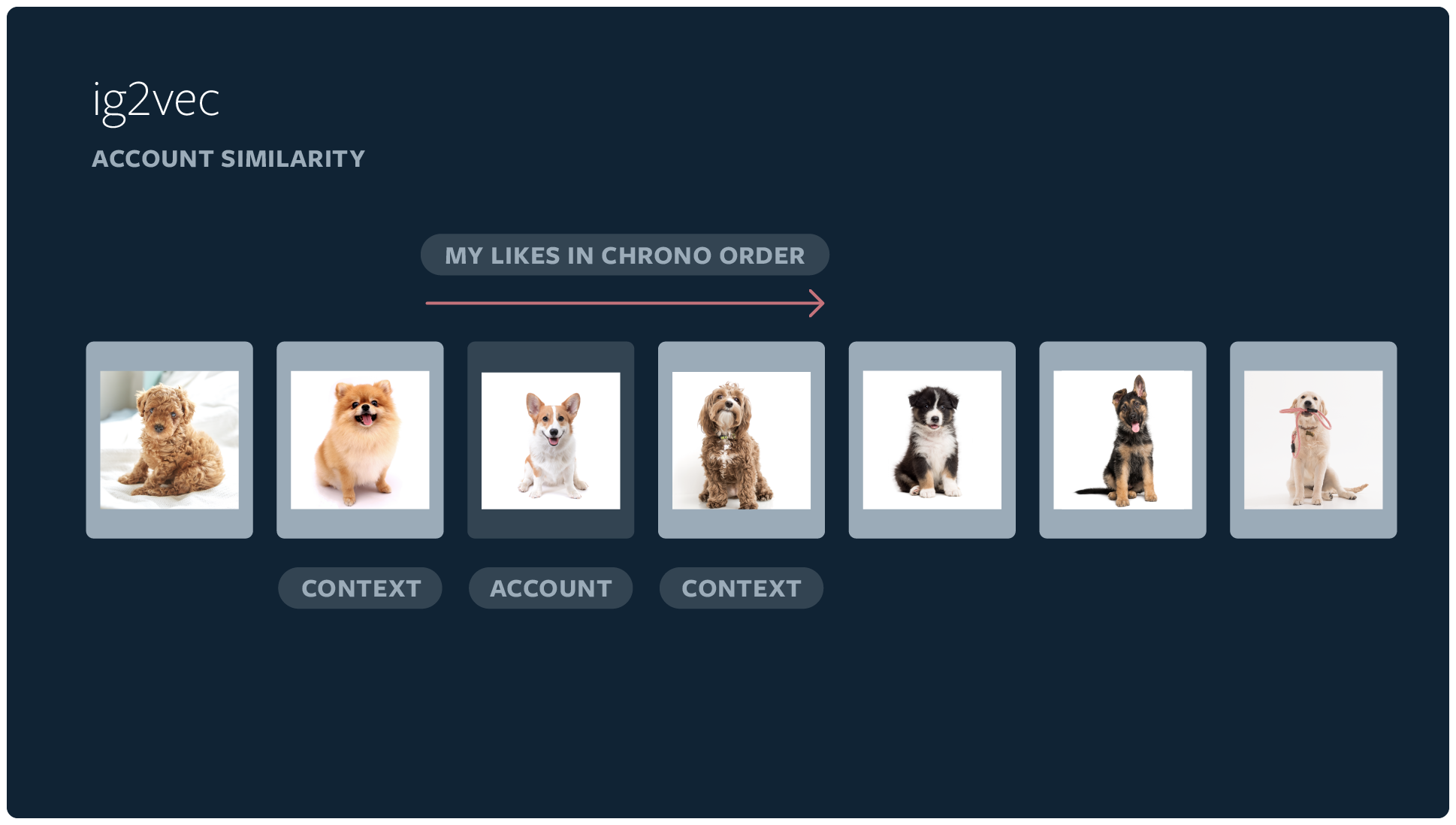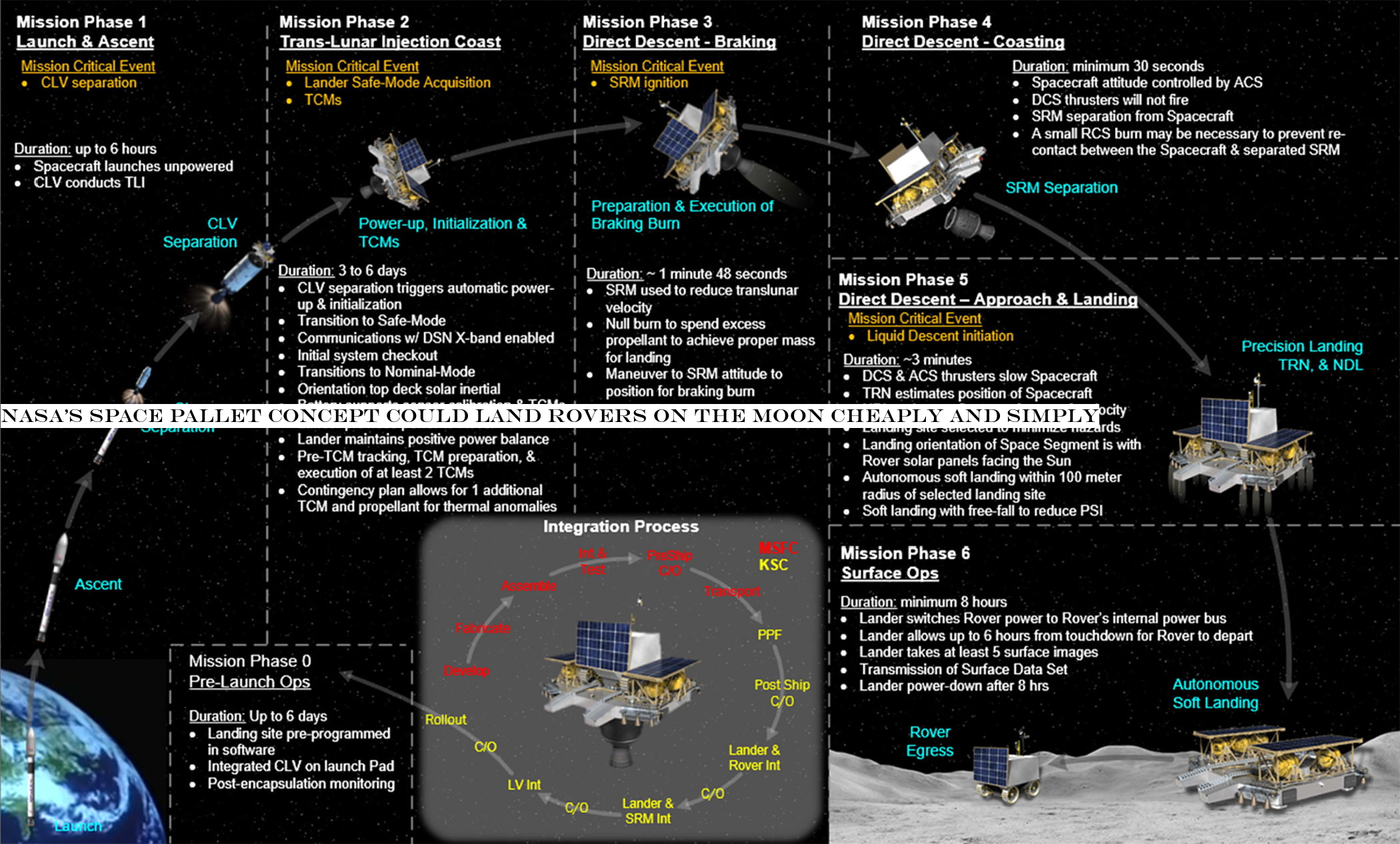Technology

- Details
- Category: Technology
Read more: What we learned at Dreamforce 2019
Write comment (91 Comments)Instagram has posted an article describing the behind-the-scenes machinery that fills the Explore tab in Instagram with new, interesting stuff every time you open it. Ita bit technical, so here are five takeaways.
Even Instagram and Facebook have limited resources
Unlike the feed, which some still would prefer was simply chronological, the Explore tab needs to be algorithmically driven. But understanding whathappening on an image-based social network and recommending new content to people is a problem thatexactly as hard as you make it.
If these companies had infinite processing power and time, they&d probably come at the question of Explore a bit differently. But as it is they need to serve hundreds of millions of people on short notice and with merely enormous computing resources. I think they put this at the top of the post so people don&t wonder why they&re cutting corners.
Italso easier to experiment and iterate when you can change stuff and see results quickly, they point out.
Itall about the account, not the post
So much is posted to Instagram that it would be pretty much impossible to keep track of every photo individually, for recommendation purposes anyway. Itsimpler and more efficient to track accounts, since accounts tend to have themes or topics, from a broader one like &travel& to something highly specific, like especially round seals.
While liking one post from an account doesn&t necessarily mean you&ll like everything else from that account, it is a good indicator that you&re at least interested in the theme of that account. Even if it was this particular post of this particular cat that you wanted to heart because it reminds you of old Mittens, if you&re liking pictures from an account that mostly posts cats, thatvaluable information.
Complex habits inform the algorithm
Notably it isn&t just image features that Instagram uses to figure out what accounts are topically linked, though of course that kind of thing can be detected too. They also use your behavior.

For instance, when you like several posts in a row, they&re more likely to be linked in some way even if Instagramalgorithms can&t quite see it:
If an individual interacts with a sequence of accounts in the same session, itmore likely to be topically coherent compared with a random sequence of accounts from the diverse range of Instagram accounts. This helps us identify topically similar accounts.
People just tend to look into stuff that way, going from one travel-focused account to the next, or focusing on animals because they need a pick-me up. All that information gets sucked up by the algorithm and inspected for relevance. Of course deliberate actions like &see fewer posts like this& and blocking accounts has a lot of weight as well.
From &seed accounts& to a top 25
The process of getting from a couple billion posts to just two dozen can be pretty difficult, but you can cut the problem down to manageable size by limiting the Explore tab to accounts linked in some way to accounts the user has already liked or saved posts from. These are called &seed accounts& because everything else in the process really grows out of them.
Because of how the machine learning system represents accounts and their topics inside itself, itsuper easy for it to find a couple hundred similar accounts.
Imagine if you know someone likes a particular reddish-orange marble and you need to find some more like it. If you just dip your hand into a sack of marbles you&re unlikely to find one quickly. Even if you pour them out on the floor you&ll still have to hunt around for a bit. But if you&ve already organized them by color, all you have to do is reach into the general vicinity of the marble they like and you&re almost guaranteed to pick a winner.
The machine learning model does that by giving all these accounts a sort of location in a virtual space, and the closer two are in that space, the closer they are topically.

So the really hard part of paring down a set of billions to a set of hundreds is basically already accomplished by the way the accounts are classified.
From there Instagram does three passes with neural networks of increasing complexity.
First, slightly confusingly, is a simpler, combined version of the next two processes, which takes it from 500 to 150 accounts. This is a little weird, but think about it this way: This neural network has seen steps 2 and 3 happen many times and has a pretty good idea of what they do. Sort of like if you&d seen cookies get made enough times that you could guess at a recipe. You&d probably get close, but you also wouldn&t want to publish it to like a hundred million people. So this step just gets the obvious stuff right.
Second is a computationally cheap neural network that uses way more signals than the simple topical similarity mentioned above. Herewhere your individual likes come into play, as well as the deeper data about accounts. You like travel, sure, but in particular you like couples traveling — both things the marble-sorting algorithm above can help with. Other parameters, like a postgeneral popularity, or actually its being different from the other posts in the mix, figure in as well. That skims another 100 off the top, leaving 50.
Third is a computationally expensive version of the above, which does another pass on those 50 and cuts them in half, basically by looking closer and taking the time to include, perhaps, a thousand data points each rather than a hundred.
I guess that was kind of long for a &takeaway.& Don&t worry, the next one is quick.
And of course, no 
&We want to make sure the content we recommend is both safe and appropriate for a global community of many ages on Explore,& they write. &Using a variety of signals, we filter out content we can identify as not being eligible to be recommended.&
So now you know why you don&t get any of that in Explore.
- Details
- Category: Technology
Read more: Inside the Instagram AI that fills Explore with fresh, juicy content
Write comment (98 Comments)Artificial intelligence continues to be the theme of the moment in enterprise software, and today a company out of Asia that has built a suite of AI-powered marketing and ad tools is announcing a round of funding. Appier, a Taipei-based startup that provides an artificial intelligence engine to brands and retailers to help improve customer engagement, predict purchasing and improve conversions on their sites, has picked up $80 million.
This Series D includes TGVest Capital, HOPU-Arm Innovation Fund (SoftBank owns Arm), TemasekPavilion Capital, Insignia Venture Partners, JAFCO Investment and UMC Capital. The company has raised $162 million to date, with previous investors including Alibaba, Sequoia, SoftBank, and Line. (The company is not disclosing its valuation but says itbeen growing since its Series C and itan upround. Appier now has around 1,000 customers.
Marketing technology — the bigger area of software that marketing and advertising people use to help launch, optimize and measure marketing campaigns — sometimes sits under the shadow of adtech, but in reality itestimated to be a $121 billion business, and growing as marketers for brands, retailers and others turn to data science to improve how they execute their work and to supplement what has traditionally been a business that operates on human precedents, psychology and hunches.
While the US and UK account for around half of all that spend, that leaves an interesting opening in markets like Asia Pacific: the customer base is still nascent but growing, and the number of startups that are focusing on the region are fewer, meaning less competition for business.
Those open waters became some of the impetus for founding Appier in Asia. AppierCEO, Chih-Han Yu, studied computer science and AI in graduate school at Sanford and then Harvard for his PhD, looking at how to use human gait data and machine learning to design better orthotics systems.
(If it seems like a big leap — no pun intended — to move from orthotics to sales conversions, itnot an unusual path when you consider that for AI scientists, both are essentially mathematical problems, jumps that other AI startup founders have also made.) Ultimately, Yu decided to move back home to found his company with Winnie Lee (COO) and Joe Su (CTO).
In Asia things have been growing so fast that it seemed like an easy entry point to us,& Yu said. The company is already pan-Asian, headquartered in Taiwan, with offices in Japan and Singapore, and with a list of investors that span all those geographies and more.
Yu noted (in answer to my question about it) that while some of the investors in this round have ties to Hong Kong, there have been no tensions in respect of the current political situation unfolding between the Mainland and its special administrative region.
Appierinitial and core product is a cross-platform advertising engine, CrossX, which covers retargeting and app installations, but also provides deep learning to help publishers and brands discover new audiences for their products.
This is still the companymost popular product, but around it, Appier has built a series of other services around the basic concept of better customer information, specifically sourcing and utilising customer data in more intelligent (and, Yu says, anonimised) ways. This has included making acquisitions — of QGraph and Emotion Intelligence (Emin) to bring in more analytics and functionality into the platform.
Yu said that the funding will be used to expand further in the region, where it is currently live in 12 countries and works with a number of large local brands, and the Asian arm of global brands (those customers include the supermarket chain Carrefour, Audi and Estee Lauder), to improve their marketing work.
&Appier is riding a strong long-term trend for enterprises leveraging data to make smarter decisions,& said DC Cheng, Chairman of TGVest Capital, in a statement. &Thanks to its unique use of AI technology in the digital marketing space, Appier has been a category leader since its inception and has the opportunity to expand into new corporate functions where data-based decisions are made. We share Appierambition and we are excited to be a partner to the company. We are confident that Appier will continue to grow as a sustainable technology company at the forefront of technology innovation.&
- Details
- Category: Technology
Read more: Taiwan’s Appier raises $80M for AI-based marketing technology
Write comment (92 Comments)
AWS seems to be using this week to get some news out ahead of its annual re:Invent developer conference in Las Vegas next week. In addition to new IoT services and updates to its Rekognition AI service, the company also today announced that it is bringing 22 new languages to its AWS Translate service and that it is expanding support for the service to six new regions.
The new languages, which are now generally available, are Afrikaans, Albanian, Amharic, Azerbaijani, Bengali, Bosnian, Bulgarian, Croatian, Dari, Estonian, Canadian French, Georgian, Hausa, Latvian, Pashto, Serbian, Slovak, Slovenian, Somali, Swahili, Tagalog and Tamil. With these 22 new languages, the service now supports a total of 54 languages and 2,804 language pairs.
With this, the service is now available in 17 regions, which now include US West (N. California), Europe (London), Europe (Paris), Europe (Stockholm), Asia Pacific (Hong Kong) and Asia Pacific (Sydney). With this, more users will be able to translate text right where itstored, without having to move it to other regions first (which would, of course, also incur additional cost).
The free tier of AWS Translate includes 2 million characters for the twelve months.
- Details
- Category: Technology
Read more: AWS Translate comes to 22 new languages and 6 new regions
Write comment (91 Comments)Back in April at our robotics event at UC Berkeley, Boston Dynamics head Marc Raibert showed off video of the companySpot robot in a number of different real world scenarios. Some, like construction and first responders, were familiar to anyone who has been following the company — and automation in general.
Another scenario, which found the robot opening doors during a training exercise for the Massachusetts State Police, was something different entirely. It was a brief video that demonstrated how the robot could potentially be used to help get human officers out of harmway during a terrorist or hostage situation.

All these months later, the video has raised some questions among some civil liberties groups — including, mostly notably, the Massachusetts wing of the ACLU. A public records request filed by the organization is in response to a Facebook post by the department describing the July event that, &seeks to learn more about how your agency uses or has contemplated using robotics.&
ACLU Massachusetts& Technology for Liberty Program Director Kade Crockford expanded on the request in a statement provided to TechCrunch:
There is a lot we do not know about how and where these robotics systems are currently deployed in Massachusetts. All too often, the deployment of these technologies happens faster than our social, political, or legal systems react. We urgently need more transparency from government agencies, who should be upfront with the public about their plans to test and deploy new technologies. We also need statewide regulations to protect civil liberties, civil rights, and racial justice in the age of artificial intelligence. Massachusetts must do more to ensure safeguards keep pace with technological innovation, and the ACLU is happy to partner with officials at the local and state levels to find and implement solutions to ensure our law keeps pace with technology.
As with any new technology, itright to ask many of these questions. Of course, this particular video has the added bonus of combining peopledistrust of big, scary robots with their (arguably deserved) distrust of law enforcement. Itpretty easy to watch a video like that and go immediately down a dystopian rabbit hole.
Boston Dynamics told TechCrunch that itnot at liberty to discuss the specifics of how the Massachusetts State Police deployed the robot, but the companyVice President Of Business Development Michael Perry explained that itput in place guidelines for how the loaner units can be used.
&Right now we&re at a scale where we can pick and choose the partners we engage with and make sure that they have a similar deployment and a vision for how robots are used,& Perry said. &For example, not using robots in a way that would physically harm or intimidate people. But also have a realistic expectation for what a robot can and cannot do.&
Perry explained that Boston Dynamics& vision has the robots taking on a first responder role, rather than one of law enforcement. The latter seems to be the source of much of the concern here. Itnot so much the idea of the robots being implemented in a scenario with bomb deployment or hazardous material, so much as the potential to take a role in policing.
Notably, the ACLUrequest involves, &Documents, including emails, discussing, referencing, or pertaining to the weaponization of any robotics.&
Perry explains that the organizationconcerns are valid, but believes that Spot doesn&t represent a significant departure from existing technologies employed by first responders.
&Itcertainly the case that when a new technology is employed, multiple stakeholders need to come to the table,& he says. &I think the issues that the ACLU has raised specifically are applicable not just to our robots but to any new technology that is deployed. I&m not sure that what we bring to the table is significantly differentiated from anything that is already out there.&
- Details
- Category: Technology
Read more: The ACLU wants details about videos of Boston Dynamics robot in police exercises
Write comment (91 Comments)Establishing an enduring presence on the Moon will mean making a lot of landings — and NASA researchers want to make those landings as reliable and cheap as possible. This robotic &pallet lander& concept would be a dead simple (as lunar landers go) way to put up to 300 kilograms of rover and payload onto the Moonsurface.
Detailed in a technical paper published today, the lander is a sort of space pallet: a strong, basic framework that could be a unit in many a future mission. Itstill a concept and doesn&t really have a name, so space pallet will do for now.
Itan evolution of a design that emerged in studies surrounding the VIPER mission that was intended to &minimized cost and schedule& and just get the rover to the surface safely. In a rare admission of (at least theoretically) putting cost over performance, the paperintroduction reads:
The design of the lander was based on a minimum set of level 1 requirements where traditional risk, mass, and performance trade parameters were weighed lower than cost. In other words, the team did not sacrifice ‘good enough& for ‘better& or ‘best.&
It should be noted, of course, that &good enough& hardly implies a slapdash job in the context of lunar landers. It just means that getting 5 percent more tensile strength from a material that costs 50 times more wasn&t considered a worthwhile trade-off. Same reason we don&t use ebony or elm for regular pallets. Instead they&re using the space travel equivalent of solid pine boards that have been tested into the ground. (The team does admit to extrapolating a little but emphasizes that this is first and foremost a realistic approach.)
The space pallet would go up aboard a commercial launch vehicle, such as a Dragon atop a Falcon 9 rocket. The vehicle would get the pallet and its rover payload into a trans-lunar injection trajectory, and a few days later the space pallet would perform the necessary landing maneuvers: attitude control, landing site selection, braking, and a soft touchdown with the roversolar panels facing the sun.

Once on the surface, the rover would go on its merry way at some point in the next couple hours. The lander would take a few surface images and characterize its surroundings for the team on Earth, then shut down permanently after 8 hours or so.
Yes, unfortunately the space pallet is not intended to survive the lunar night, the researchers point out. Though any presence on the moonsurface is a powerful resource, itexpensive to provide the kind of power and heating infrastructure that would let the lander live through the freezing, airless cold of the Moonweeks-long night.
Still, itpossible that the craft could be equipped with some low-key, self-sustaining science experiments or hardware that could be of use to others later — a passive beacon for navigation, perhaps, or an intermittent seismic sensor that detect nearby meteorite impacts.
I&ve asked for a bit more information on the possibilities of science instruments onboard, and what the alternatives might be should the space pallet not be pursued further than concept stage. But even if that were to be the case, the team writes in the paper, &it is important to note that these and other derived technologies are extensible to other lander designs and missions.&
- Details
- Category: Technology
Read more: NASA’s space pallet concept could land rovers on the moon cheaply and simply
Write comment (90 Comments)Page 260 of 5614

 20
20